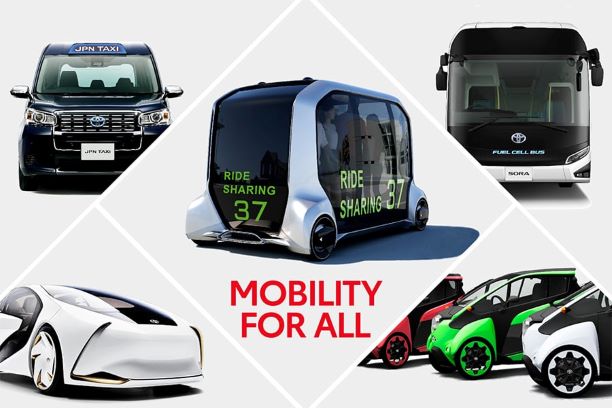

Toyota plans electric and electrified vehicles for Tokyo 2020 games
Toyota Motor Corporation, the worldwide partner of the Olympic and Paralympic Games, has announced that it will provide a full line-up of electrified vehicles, including unique versions of certain vehicles as well as vehicles developed specifically to support the Olympic and Paralympic Games Tokyo 2020 (Tokyo 2020).
With its electrified line-up, Toyota, together with the Tokyo Organising Committee of the Olympic and Paralympic Games, aims to achieve the lowest emissions target level of any official fleet used at the Olympic and Paralympic Games, and thereby also helping to reduce the environmental burden of the Games.
Toyota will provide a total of around 3,700 mobility products and/or vehicles for Tokyo 2020. The majority, or nearly 90 percent, of the official vehicle fleet will be electrified.


The Electrified vehicles fleet will include Hybrid Electric Vehicles (HEV), Fuel Cell Electric Vehicles (FCEV), such as the hydrogen-powered Mirai, Plug-in Hybrid Electric Vehicles (PHEV), the Prius PHV (known as Prius Prime in some markets), and Battery Electric Vehicles (BEV), including the “APM” (Accessible People Mover) and the e-Palette as well as TOYOTA Concept-i, which will provide a unique and wide-range of diverse mobility during Tokyo 2020. Among the electrified vehicles provided, Toyota will include approximately 500 FCEVs and approximately 850 BEVs, the largest of any fleet for a Games to date.
Out of the approx. 3,700 mobility products and/or vehicles for Tokyo 2020, 2,700 vehicles will be part of the official fleet providing transportation support between venues during the Olympic Games. These will be commercially-available vehicles, such as Mirai, etc. Preliminary calculations suggest that the CO2 emitted by the commercially-available fleet for Tokyo 2020 will average less than 80 g/km, resulting in a reduction by approximately half of the typical amount when compared to a similar-sized fleet of mostly conventional gasoline and diesel models.
Additionally, further reductions are anticipated during the Games when combined with Toyota’s other advanced mobility products and/or electrified vehicles, including the unique versions of vehicles or vehicles designed for use at the Games. As such, Toyota aims to achieve the lowest emissions target level of any official fleet used at the Olympic and Paralympic Games.
The auto major’s three main pillars for Tokyo 2020 center on (1) Mobility for All, or allowing all people the freedom to move, (2) Sustainability, centering on the realisation of a hydrogen society (environment/safety), and (3) Transportation support for the Games using the Toyota Production System (TPS).
Picture credit: Toyota and published with the permission from Saur Energy
In a significant move toward advancing green energy and industrial growth in the state, Himachal…
Golabl chemical conglomerate BASF has announced that its now offering the world’s first biomass-balanced polyethersulfone…
In a crucial stint to bolster the biogas sector and sustainable dairying in the country,…
TotalEnergies SE has received approval to proceed with its Middlebrook solar and battery project in…
Andhra Pradesh Chief Minister Chandrababu Naidu has inaugurated the Rs 1,000-crore green hydrogen plant of…
The BITS Pilani has developed an innovative solution for managing landfill leachate, domestic septage, and…